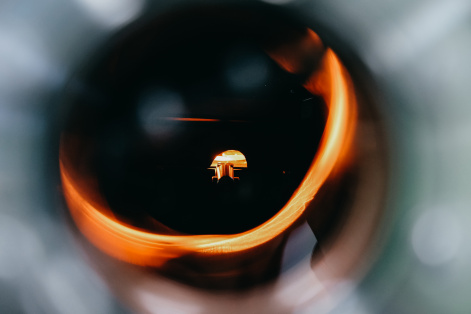Hard X-rays helped to see the internal structure of crystals
9 September 2021 г.

Just a few queries to Google, if to consider the amount of energy consumed for it, can boil a liter of water. This example demonstrates the growing need to find ways to reduce the power consumption of computers. Non-centrosymmetric crystal structures with magnetoelectric properties can become one of the solutions. Due to these properties, they are able to control the electrical or magnetic characteristics of a substance under the influence of a magnetic field. Before designing such devices for the future, it is necessary to understand how magnetoelectric effects and crystal structure are related.
Scientists from the Krasnoyarsk Science Center of SB RAS, together with colleagues from Moscow, France and Israel, developed a new method for visualizing structural characteristics in non-centrosymmetric materials. With its help, scientists were able to examine domains - structural elements of crystals several hundred microns in size, which no one could see before.
The domain is a small part of a crystal which forms its structure and is responsible for its orientation. It is known that domains are closely related to the magnetoelectric effect, but little is known about their existence, because it is extremely difficult to observe them. The new technique makes it possible to visualize domains and investigate the principles and features of their formation.
In their approach, the scientists combined two well-known methods: micro-focusing X-ray optics and polarized X-rays. The researchers selected radiation at a specific wavelength and focused it with a lens at a specific point in the crystal. By concentrating on one point of the sample, the beam can "catch" the domain and transmit data about it through spectral reflection. At the output, scientists obtain data on spectra and using them they can estimate, for example, the sizes of the domains and their other properties.
The scientists found that the domains are typically several hundred microns in size. They tested their method on Sm ferroborate crystals, which are known for their large magnetoelectric effect and can presumably be effectively used in memory devices. Studying the crystal by the new method, scientists discovered that it is twinned - that is, it represents two crystals connected into one. The domains of these crystals were oriented differently and were mirror images of each other. According to the scientists, the twinning of the crystal underestimated the value of its magnetoelectric effect.
“The developed method is promising for determining the size and spatial distribution of domains in crystals. Our approach also shows good results for multiple twinned crystals or other materials with a complex domain structure, which cannot be studied by other methods. An important advantage of hard X-ray radiation is its high penetrating power, which makes it possible to measure real volumes of samples and investigate the specific properties of an object. This is especially promising for samples with many twinned domains. The method developed can be a powerful tool for improving the quality of materials with non-centrosymmetric structures. In addition, it will help to understand the mechanism of magnetoelectric coupling in various ferromagnetic crystals. If we understand the location of the domains and then, learn how to control their growth, then it will be possible not only to predict, but to improve and enhance the properties of the material in order to achieve new effects, which will then be applied in electronics. Moreover, the development of such methods is currently an extremely urgent task, since they will be used in installations of the "megascience" class being developed in Russia. This is, for example, the SKIF synchrotron, which is being created in Novosibirsk with the participation of researchers from our center, RIF on Russky Island and ‘SILA’ in the Moscow Region,” said Mikhail Platunov, Candidate of physical and mathematical sciences at the L.V. Kirensky Institute of Physics KSC SB RAS.
The scientist also note that understanding the laws by which еру domains are formed, will allow one to learn not only to grow crystals, but also to separate the twinned samples, creating two separate crystals from them with undisturbed properties.
The study was supported by the Russian Science Foundation (projects 19-72-00002 and 16-12-1053), the Russian Foundation for Basic Research (projects 19-52-12029 and 19-02-00483), as well as partial support of the Ministry of Science and Higher Education of the Russian Federation.
Share:
